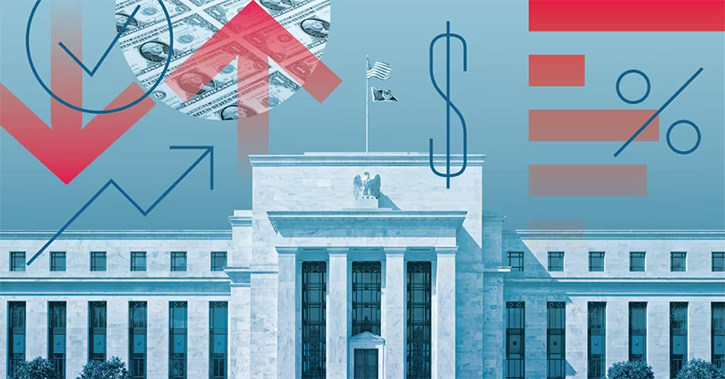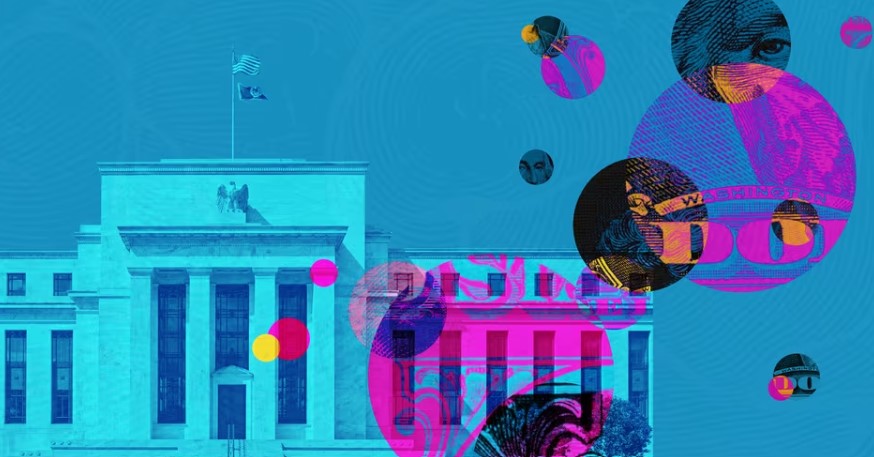Jeremy Glaser: For Morningstar, I'm Jeremy Glaser. The Federal Reserve stood pat on rates in March and also scaled back its expectations for future rate increases. I'm joined today by Bob Johnson, our director of economic analysis, for his take.
Bob, thanks for joining me.
Bob Johnson: Thanks for having me.
Glaser: Let's look at what the Fed did say in their statement in the press conference afterward. They didn't raise rates. That was broadly expected. What was somewhat unexpected is that they brought down their future expectation of rates. What do you think was behind that?
Johnson: They don't give one formal opinion on what the number is going to be for the Fed funds rate, but each of the governors independently comes up with their thoughts on where rates might be by the end of the year.
What happened this time around is that they did the so-called dot plot; they plot the interest rates from each governor, and you get a little pattern. What happened this time around is that it went from about 1.4% down to 0.9%. That's about a half a point lower, so that essentially means they will probably raise rates twice more this year. Remember, in December they were thinking, we're going to do this three or four more times; things are kind of heating up. We want to stay on top of things, and it's a sign of our confidence in the economy, and so forth. They had thought they would be raising as much as three or four times this year. Now it looks much more, from the dot plot anyway, like they are only planning or thinking about doing it twice.
Glaser: By some market-driven measures, there was already a lot of skepticism that they were going to raise rates that much anyway. Is this more of just a reflection of reality, or a real change in the way the Fed is thinking about the economy?
Johnson: I don't think it's any change in the way that they are thinking. I think they did the same math and decided, we're not going to do it this meeting; we can't have a meeting where we do a half a point at a time; that will really spook markets. Maybe it's not even the next meeting; we don't know. I think people are being a little bit cautious. They have been thinking for some time that maybe they wouldn't raise it quite so many times. But today, like you said, they did come down to reality and realized the fact that probably, just mathematically,it can't happen.
Glaser: What were some of the concerns? Is it U.S. economic growth? Is it what's happening abroad? What are the pressure points?
Johnson: Well, they did bring down the U.S. forecast a little bit for 2016, but not really by much. They went from a top end of 2.5% GDP growth this year to 2.3%--hardly enough to justify a 0.5 point difference in the Fed funds rate target. I'm not thinking it was really that.
In some of their statements they seem to indicate what the real issue might be is some of what's going on internationally. The whole world growth outlook is a little less, and that might be a little bit of what's holding them back from raising rates.
Glaser: Are they having a challenge, though, where on one hand you think the U.S. economy is doing about as well as they thought and maybe does need to support higher rates, while on the other hand you have these issues abroad and maybe you want some more easy monetary policy. How are they splitting the difference between these two?
Johnson: I think that the two-rate-hike policy does it. It's not them saying, this takes a little white to settle;let's wait for the end of the year before we do something. There seems to be some implication that they do want to act and that they are watching closely.
But there is a fine line, a balancing act between the U.S. and [international concerns]. Despite the little tick-down in GDP, they made the clear statement that the risk of a recession seems less to them than it did at the last meeting, and they certainly seem to be a little bit more worried about what was going on overseas again. So, that's clearly weighing on what they are doing a little bit, and they just feel the U.S. data isn't totally conclusive yet.
Glaser: We have the meeting next month, in April, and then one in June. Do you think we are going to see a rate increase at one of those meetings?
Johnson: I do, and I think that the timing of the next meeting might be a little close on the CPI data, but the CPI data that we got today, for February, looked horrible. It looked like inflation was really heating up when you strip out energy prices, and if they saw a second month of that … Every meeting, they say, is a live meeting, and if the CPI is as bad next month as it was this month, they could act in April. I certainly think they will, in my opinion, act by June.
Glaser: Bob, thanks for your analysis of this meeting today.
Johnson: Thank you.
Glaser: For Morningstar, I'm Jeremy Glaser. Thanks for watching.





















